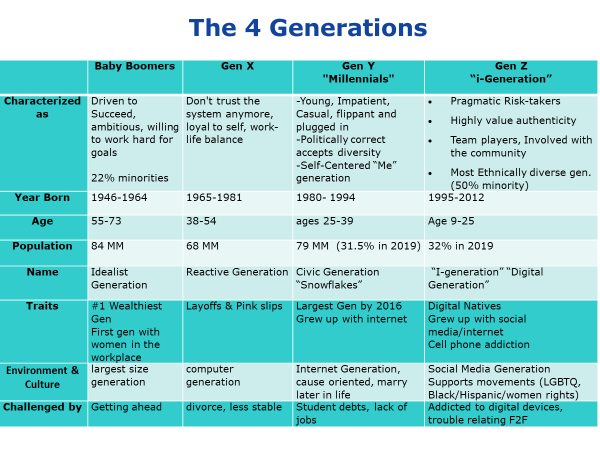4 Steps to Effective Strategic Planning & Implementation
By David Shaffer, Senior Consultant
Learn to “Charter” Strategic Initiatives, Manage Accountability & Achieve Results
Most companies schedule their management retreat to develop and establish the strategic direction for the remainder of the year, as well as a 3-5 year outlook. The process, although it can contribute to team building by “getting away” from the daily grind, frequently does not result in strategy. That’s because what starts as a noble intention or cause ends with little to no accountability, letting life return to “normal” soon after the planning meeting. Effective Strategic Planning Implementation requires accountability both in the creation and management of strategic initiatives. Here is practical & accountable approach to effective strategic planning and implementation.
ONE: Develop Strategic Initiatives
Many times there is confusion between what initiatives are truly strategic versus what are simply tasks and obstacles that impact the daily operating procedure.
- As an example of what not to do: one company identified distribution of various financial reports as a strategic means of raising financial performance. Although the concept may sound strategic it is merely an improvement in task execution, addressing an operational issue rather than a strategy that aligns with the direction of the company.
- Here is what you should do: Your strategic planning session should generate and classify two types of initiatives.
-
- A few critical initiatives expected to be implemented in the short term, within the current fiscal year
- A few growth initiatives, requiring more exploration in order to lay the foundation for future critical initiative consideration.
Organizations that define more than 5-6 critical initiatives are generally focused on task implementation rather than strategy. Likewise, exploration of more than 2-3 growth initiatives represents a strategic planning outcome that has no direction or focus.
TWO: Assign Accountability
Once both critical and growth initiatives have been defined, individual Project Managers should be assigned to lead the charge, plan the implementation, drive the process & communicate the results. The use of chartering is a process commonly used by project managers that allows organizations to clearly convert strategy into action while managing accountability.
For each strategic initiative a charter is written, reported against and reviewed regularly by the management team. It is important to note that as a result of exploration efforts, growth initiatives can often become new critical initiatives that require project managers and charters.
THREE: Build Strategic Project Charters
Multiple resources are typically used to implement each strategic initiative. However it is essential that one individual have responsibility and accountability for each project & project charter.
The aggregate of strategic initiatives & associated charters represent the short term and long term implementation of the key strategies. Although they are prepared and managed by different individuals, it is important that the approach is consistent. So just what does one include in a charter? Let’s take a deeper look.
Background
Description and facts related to the problem, opportunity or situation that the project is going to address. The background lays out the context of the charter; however the details of the charter are laid out in subsequent sections. The background should refer to discussions generated during the strategic planning session.
Key Challenges
In every endeavor there are generally challenges. This section provides a description of the challenges, obstacles and issues that must be overcome in order to successfully complete the charter (project) and to deliver the benefits. This is not a description of the tasks, even though carrying out the tasks may be challenging.
Project Overview and Rationale
Description of what the project will accomplish at a high level, and a list of the project objectives and business benefits.
- Brief example: The objective of this project is to develop and implement a new, automated sales order entry system. The new system should reduce the time to configure and enter a new order from 4 hours to approximately 20 minutes (objective). It will significantly reduce order entry errors, increase sales and improve customer satisfaction (benefits).
Approach
Description of how the project will be carried out: the team, methodology, and timeframe for carrying out the project. The description should be a high level and should not duplicate the list of milestones or major deliverables.
Scope:
Description of the boundaries of the project: what it will and will not address.
Major Milestones
Milestones should reflect the overall approach and should cover the complete lifecycle of the project. The list of milestones does not however constitute a complete project plan. Milestones will be changed and should be updated when the project plan is completed.
Start Date: xx/xx/xxxx End Date: xx/xx/xxxx
First Major Milestone: xx/xx/xxxx
- Major Action: xx/xx/xxxx
Middle Target Date xx/xx/xxxx
- Major Action: xx/xx/xxxx
- Major Action: xx/xx/xxxx
Milestone close to completion: xx/xx/xxxx
Major Deliverables:
List of specific accomplishments, documents, or other tangible outputs of the project. Deliverables are not the same as objectives or business benefits. The deliverables may duplicate some of the major milestones (i.e., the completion of a deliverable could be a milestone.)
Stakeholders and Resources
- Customer: [Group that will directly benefit from this project. Could be an internal or external customer or stakeholder group. Be specific.]
- Sponsor: [Executive who has overall responsibility for the project. Approves the charter and budget. Heads up Steering Committee as needed.]
- Project Manager: [Manager with responsibility for the leadership and day-to-day management of the project.]
- Outside Resources: [As needed.]
- Team Members: [Resources assigned to the project who will participate throughout the project. Do not include SMEs (subject matter experts) or other resources that work on specific tasks or are consulted with during the project.]
Project Budget
Training materials: $ X
Marketing materials: $ Y
Outside resources: $ Z
Assumptions, Constraints and Concerns
Assumptions:
- [Events or conditions that must be in place in order for the project to start or to be completed.]
- E.g. new marketing manager must be hired and in place by no later than 6/1.
Constraints:
- [Limitations that the project must adhere to.]
Concerns:
- [Events or conditions that may occur, that would impact the successful completion of the project.]
- E.g., If the pending acquisition closes before 7/31, some of our team resources may be pulled into the integration effort.
The assumptions, constraints and concerns must be specific to the project – not conditions that are necessary for any project. Examples of conditions that should not be listed are:
- Having adequate budget, resources and strong support from leadership. (True for any project.)
- No major economics or business disruptions. (True for any project.)
FOUR: Monitor & Communicate Progress
Many organizations struggle with the implementation of key initiatives; accountability is frequently a major stumbling block. By assigning Project Managers and the consistent use of project chartering, project plans can be well defined, resourced and monitored. The aggregate results of the charters collectively address the implementation of defined key initiatives. It is customary that on a weekly basis, each Project Manager reports the status of their charter so that combined project plans are managed by a single source. That is, for quality and consistency the overall progress of the initiatives is maintained in a central repository accessible to the entire management & leadership team.
There are many ways to distill strategic planning into execution. Chartering is a great way to focus on execution while creating accountability & buy-in throughout the process.
David Shaffer, MBA , Sr. Consultant, is our practice head for our Business Consulting For Higher Productivity Division and for our ERP and M&A practice. He is recognized for his ability to effectively integrate all aspects of the business, including financial management, information systems, infrastructure, sales management, sales strategies, and operations. David assists companies from planning through operational and business process improvement opportunities to the selection and integration of management information systems solutions. His range of company support includes start-ups through Fortune 500 firms.
Lighthouse Consulting Partners, LLC Divisions
Testing Division provides a variety of services, including in-depth work style & personality assessments for new hires & staff development. LCP can test in 19 different languages, skills testing, domestic and international interpersonal coaching and offer a variety of workshops – team building, interpersonal communication.
Business Consulting for Higher Productivity Division provides stress & time management workshops, sales & customer service training and negotiation skills, leadership training, market research, staff planning, operations, ERP/MRP selection and implementation, refining a remote work force, M&A including due diligence – success planning – value creation and much more.
To order the books, “Cracking the Personality Code”, “Cracking the Business Code” and “Cracking the High-Performance Team Code”, please go to www.lighthouseconsulting.com.
Permission is needed from Lighthouse Consulting Partners, LLC to reproduce any portion provided in this article. © 2024

 “Once you recognize that the purpose of your life is not to serve your business, but that the primary purpose of your business is to serve your life, you can then go to work on your business, rather than in it, with a full understanding of why it is absolutely necessary for you to do so.”
“Once you recognize that the purpose of your life is not to serve your business, but that the primary purpose of your business is to serve your life, you can then go to work on your business, rather than in it, with a full understanding of why it is absolutely necessary for you to do so.”


















 My lifetime business mentor taught me that if a business has a strong Mission Statement and defined Values, tough decisions become easier to make. A strong Mission Statement and defined Values become your moral compass. The same holds true for families. If you know who you are and what you stand for, family decisions become easier. In the process of discussing who you are what you stand for, the family unit becomes closer and more aligned. In working on a Plan to build your family’s foundation you become stronger as a family unit. This is particularly important for families of wealth.
My lifetime business mentor taught me that if a business has a strong Mission Statement and defined Values, tough decisions become easier to make. A strong Mission Statement and defined Values become your moral compass. The same holds true for families. If you know who you are and what you stand for, family decisions become easier. In the process of discussing who you are what you stand for, the family unit becomes closer and more aligned. In working on a Plan to build your family’s foundation you become stronger as a family unit. This is particularly important for families of wealth.


 • The Family Bank can be used to spur NextGen entrepreneurial spirit. This is an interesting concept. Assume that the family business is in manufacturing, but someone in the NextGen has NO interest in manufacturing but does have an interest in restaurants. The Family Bank could be tapped into to secure a franchise so that the NextGen can learn if they really like the restaurant industry, or if it was a passing fade. There is one Orange County family that used their family bank to motivate the NextGen’s to learn about real estate and become real estate investors. Some of the ground rules of their bank was: a) The investment had to be in real estate. b) There had to be a formal business plan. c) The Plan had to be approved by the Family. d) The funding was in the form of a no-interest loan. e) The loan had to be paid back within 18 months. If these conditions were met, the father would make all of the resources of his company available to the project. You can guess that the father was a successful real estate developer an investor.
• The Family Bank can be used to spur NextGen entrepreneurial spirit. This is an interesting concept. Assume that the family business is in manufacturing, but someone in the NextGen has NO interest in manufacturing but does have an interest in restaurants. The Family Bank could be tapped into to secure a franchise so that the NextGen can learn if they really like the restaurant industry, or if it was a passing fade. There is one Orange County family that used their family bank to motivate the NextGen’s to learn about real estate and become real estate investors. Some of the ground rules of their bank was: a) The investment had to be in real estate. b) There had to be a formal business plan. c) The Plan had to be approved by the Family. d) The funding was in the form of a no-interest loan. e) The loan had to be paid back within 18 months. If these conditions were met, the father would make all of the resources of his company available to the project. You can guess that the father was a successful real estate developer an investor. This journey takes time, and it is important to get started. It can, however, very difficult to accomplish by yourself. Most families find it useful to engage a guide to help you navigate all of these topics before they become issues. It is important to understand that there are “Quantitative” issues and there are “Qualitative” issues. Most of the family business consultants and advisors are “Quants”. Most of the tougher issues to navigate are on the “Qual” side of the house. A balance of Quant and Qual is important since there is potentially so much at risk.
This journey takes time, and it is important to get started. It can, however, very difficult to accomplish by yourself. Most families find it useful to engage a guide to help you navigate all of these topics before they become issues. It is important to understand that there are “Quantitative” issues and there are “Qualitative” issues. Most of the family business consultants and advisors are “Quants”. Most of the tougher issues to navigate are on the “Qual” side of the house. A balance of Quant and Qual is important since there is potentially so much at risk.
 Regardless of the status of the current information technology, that is utilizing an existing system or entering into the selection process of a new one, it is essential that the TOM and value to be derived are clearly defined. That is, just how will we as an organization measure the ERP value and, equally important, how will our customers measure us to decide if we are in fact successful in implementing our strategy. In addition to this measurement is the strategic plan. It must be reflective of where we want the business to be and how we will measure our success.
Regardless of the status of the current information technology, that is utilizing an existing system or entering into the selection process of a new one, it is essential that the TOM and value to be derived are clearly defined. That is, just how will we as an organization measure the ERP value and, equally important, how will our customers measure us to decide if we are in fact successful in implementing our strategy. In addition to this measurement is the strategic plan. It must be reflective of where we want the business to be and how we will measure our success.



 So, there you are! 10 quick strategies for survival in the new decade. Good luck and let me know your success with these tips!
So, there you are! 10 quick strategies for survival in the new decade. Good luck and let me know your success with these tips!
